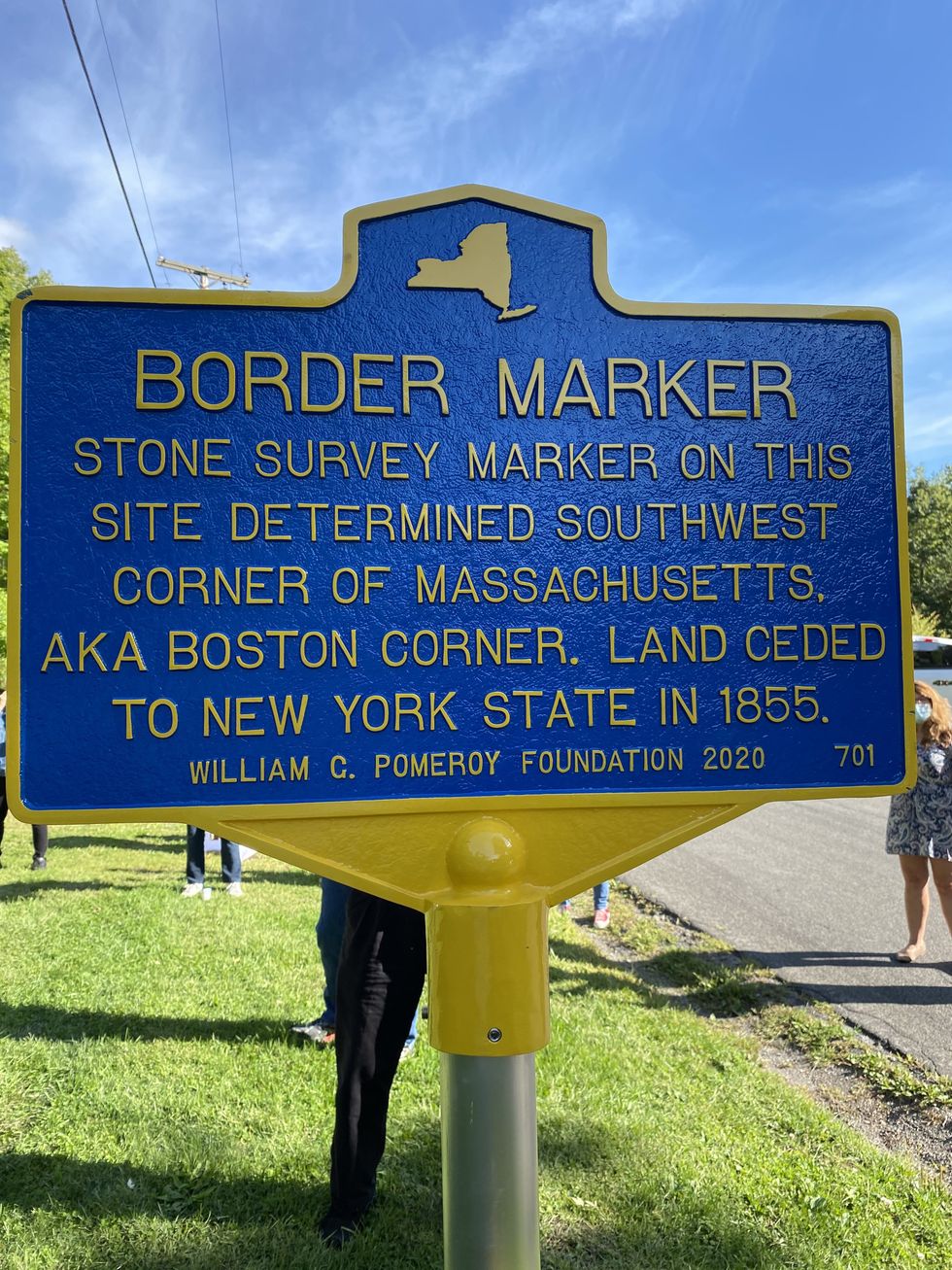ANCRAM — Celebrating the identification of an important geographic point in hamlet’s history, the hamlet of Ancram and the Boston Corner Community Organization invited local residents to take part in a ceremony for the unveiling on the William G. Pomeroy Foundation Historic Marker on Saturday, Sept. 12.
According to Boston Corner Community Organization Chairman Carol Falcetti, the survey marker was placed on the original southwest corner of Massachusetts before Boston Corner was ceded to New York in 1855.
“We believe that the survey marker may be the original marker set by Connecticut and New York in 1731 before the Oblong trade,” Falcetti said. “The marker has been broken and because there is no writing, it became a small rectangular stone set upright at the side of the road.”
Using coordinates made public on the world wide web, Roeliff Jansen Historical Society members Jim Mackin, Jane Peck and Bruce Darling found the marker; upon further examination, Falsetti and her husband, fellow Boston Corner Community Organization member Norman Osofsky, realized the marker was on their property.
Falcetti applied for a grant from the William G. Pomeroy Foundation while Ancram Planning Board Clerk John Hoffman oversaw and enabled the application process.
Beginning at 4 p.m., 28 members of the Ancram-Boston Corner community attended the ceremony held at 224 Boston Corner Road in Ancram. Following the unveiling, attendees were invited to walk the half-mile distance to the actual survey marker while maintaining a 6-foot social distance.
— Kaitlin Lyle









 Submitted
Submitted






